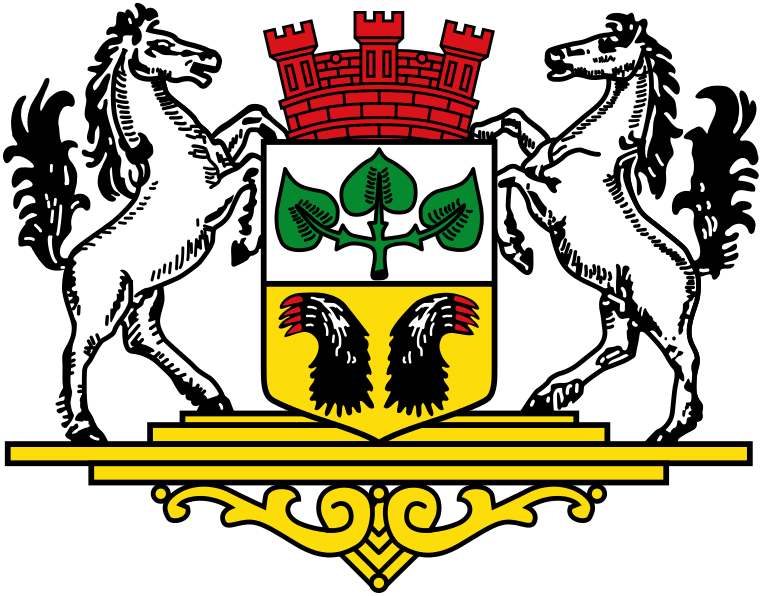Ragiv:DEU Bassum COA.svg

Size of this PNG preview of this SVG file: 762 × 596 pixels. Other resolutions: 307 × 240 pixels • 614 × 480 pixels • 982 × 768 pixels • 1,280 × 1,001 pixels • 2,560 × 2,002 pixels.
Ragiv rigik (ragiv in fomät: SVG, magodaziöbs 762 × 596, gretot: 80 KB)
Jenotem ragiva
Välolös däti/timi ad logön ragivi soäsä äbinon ün tim at.
| Dät/Tim | Magodil | Mafots | Geban | Küpet | |
|---|---|---|---|---|---|
| anuik | 18:35, 2014 gustul 27id |  | 762 × 596 (80 KB) | Jürgen Krause | now with all parts Or in FIAV colours |
| 13:57, 2014 gustul 25id |  | 762 × 596 (84 KB) | Jürgen Krause | == {{int:filedesc}} == {{COAInformation |blasonde=der Stadt Bassum, Landkreis Diepholz, Niedersachsen |blasonnement-de=„Geteilt von Silber (Weiß) und Gold (Gelb); oben ein schwebender aufrech... |
Yüms
Pads nonik peyümons ad ragiv at.
Ragivigeb Valöpik
The following other wikis use this file:
- Geb su ar.wikipedia.org
- Geb su azb.wikipedia.org
- Geb su ce.wikipedia.org
- Geb su da.wikipedia.org
- Geb su de.wikipedia.org
- Bassum
- Colnrade
- Schildhalter
- Benutzer:Vorlage/aus Bassum
- Liste der Wappen im Landkreis Diepholz
- Pestinghausen
- Albringhausen (Bassum)
- Benutzer:Einstückvombrot/Vorlagen/Navigationsleiste Bassum
- Vorlage:Navigationsleiste Ortsteile von Bassum
- Nordwohlde
- Neubruchhausen
- Bramstedt (Bassum)
- Wedehorn
- Apelstedt
- Groß Ringmar
- Eschenhausen
- Groß Henstedt
- Hallstedt
- Schorlingborstel
- Stühren
- Hollwedel
- Nienstedt (Bassum)
- Osterbinde
- Benutzer:Musikus96
- Benutzer:Stefan1973HB
- Benutzer:Thecrusher
- Liste der Gemeinden im Landkreis Diepholz
- Wikipedia:WikiProjekt Wappen/Archiv/2014
- Röllinghausen (Bassum)
- Geb su en.wikipedia.org
- Geb su eo.wikipedia.org
- Geb su es.wikipedia.org
- Geb su et.wikipedia.org
- Geb su eu.wikipedia.org
- Geb su fa.wikipedia.org
- Geb su fr.wikipedia.org
- Geb su hu.wikipedia.org
- Geb su it.wikipedia.org
- Geb su ja.wikipedia.org
- Geb su kk.wikipedia.org
- Geb su ku.wikipedia.org
View more global usage of this file.



